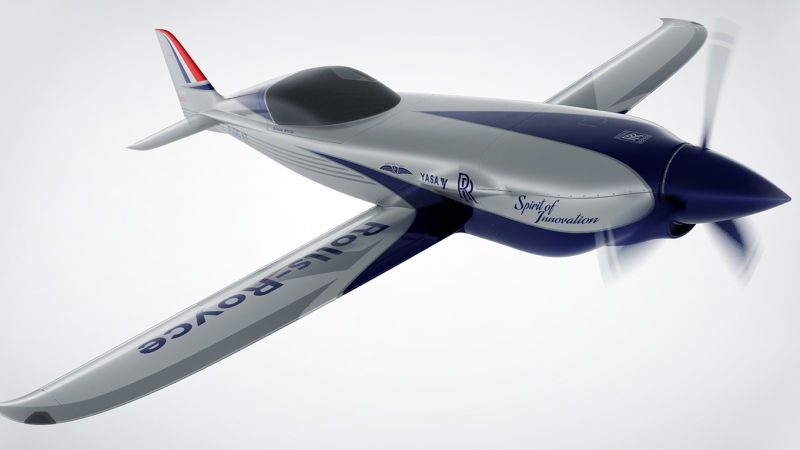
Rolls Royce leads a group of UK Government funded projects under the name ACCEL, which is an abbreviation of “Accelerating the Electrification of Flight” somehow. With the group’s newest flight project, the Spirit of Innovation, they aim to exceed 300 miles per hour, and sustain speed for at least forty minutes, enough to cross over from London to Paris. It’s an ambitious project, and one that Rolls hopes will kick off a “third wave of aviation.”
Rolls Royce was at the absolute forefront of airplane propeller driven technology in 1931 with the Supermarine S.6B, which won the Schneider Trophy for top speed that year with a max speed of 343 miles per hour. That plane kicked off a series of innovations for Rolls Royce and gave the company the notoriety it needed to become the leader in British flight.
The current electric plane record is held by Siemens, which put up a plane to 210 miles per hour in 2017. ACCEL team manager Matheu Parr wants to blow that speed out of the water, and is using the Supermarine’s speed record as the benchmark for the new Spirit of Innovation.
“We’re monitoring more than 20,000 data points per second, measuring battery voltage, temperature, and overall health of the powertrain, which is responsible for powering the propellers and generating thrust. We’ve already drawn a series of insights from the unique design and integration challenges,” says Parr. “And we’re gaining the know-how to not only pioneer the field of electric-powered, zero-emissions aviation – but to lead it. At this point, our confidence is sky high.”
This all-electric plane is set to fly sometime in 2020, and the specifications look absolutely wild. For maximum frontal area efficiency, the battery pack has to be small and compact, merging 6000 lithium cells with an advanced cooling system to help keep the batteries stable. With three stacked YASA 750R electric motors, the plane will have around 500 horsepower available to spin the modern design propeller.
Advertisement
In order to make this project a reality, the highest tier aerodynamics engineers from all over the UK were hired, primarily from within Rolls Royce’s aerospace engineering division, as well as some from within the motorsport community. This is truly an all-in mission for the British industrial complex.
To get a look at the plane in more detail, here is a rudimentary infographic, as provided by Rolls in PDF format.













